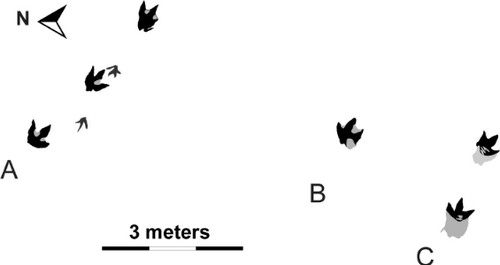Quelques autres news de ces dernières semaines :
Gang Han, Luis M. Chiappe, Shu-An Ji, Michael Habib, Alan H. Turner, Anusuya Chinsamy, Xueling Liu & Lizhuo Han (2014)
A new raptorial dinosaur with exceptionally long feathering provides insights into dromaeosaurid flight performance. Nature Communications 5, Article number: 4382 doi:10.1038/ncomms5382
PDF
Un grand microraptorine à longues plumes :
Changyuraptor yangi
Prieto-Marquez, A., Wagner, J. R., Bell, P. R., and Chiappe, L. M., (2014).
The late-surviving 'duck-billed' dinosaur Augustynolophus from the Upper Maastrichtian of western North America and crest evolution in saurolophini Geological Magazine, published on line, 17 pp.
L'hadrosaure californien
Saurolophus morrisi devient
Augustinolophus morrisi. Ce dernier est maintenant daté du Maastrichtien supérieur, et est le second genre d'hadrosaure pour ce sous-étage en Amérique du Nord (puisque
Anatotitan est considéré comme synonyme d'
Edmontosaurus).
Enfin, on ne l'avait pas encore précisé ici, mais l'abélisauridé de Provence
Arcovenator, dont une première description fut publiée en ligne en Décembre 2013, est finalement un dinosaure de 2014. La publication officielle datant du premier trimestre de cette année.

 [2014] Brèves de l'actualité des dinosaures
[2014] Brèves de l'actualité des dinosaures

